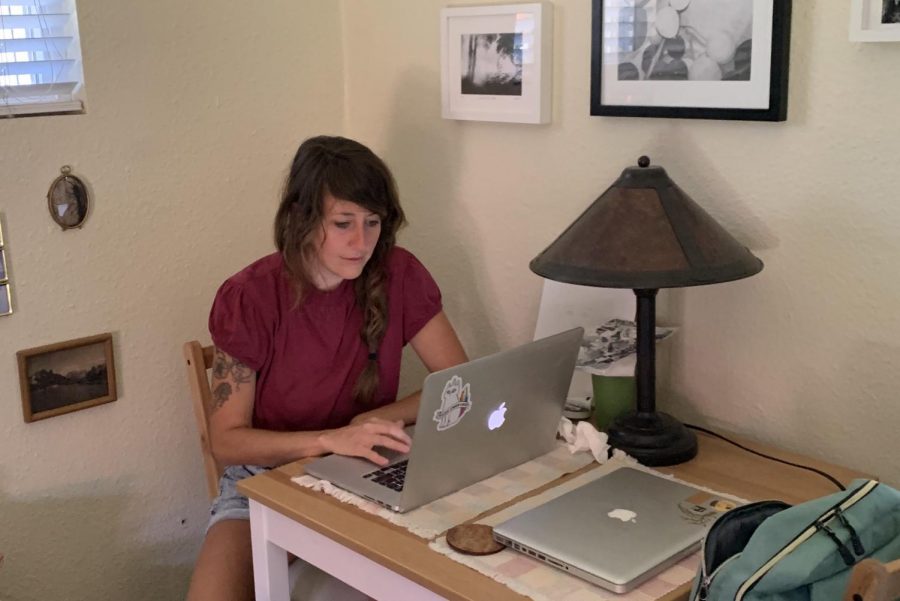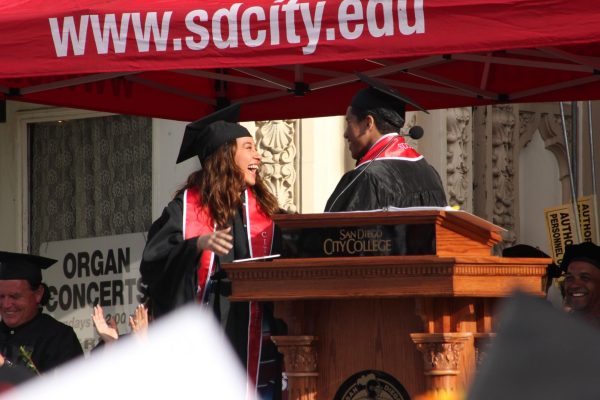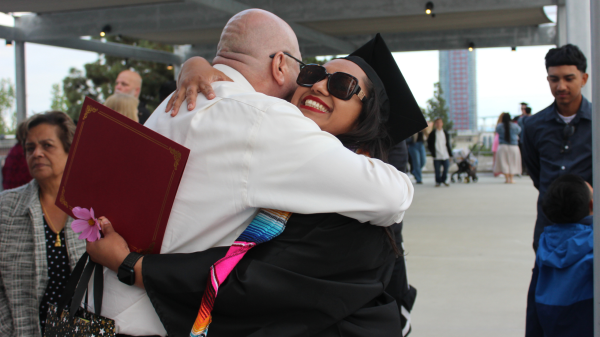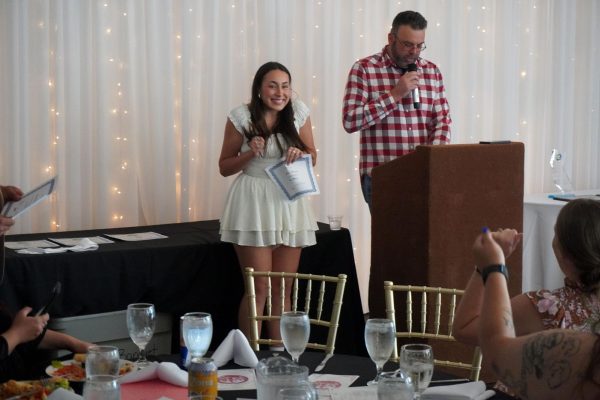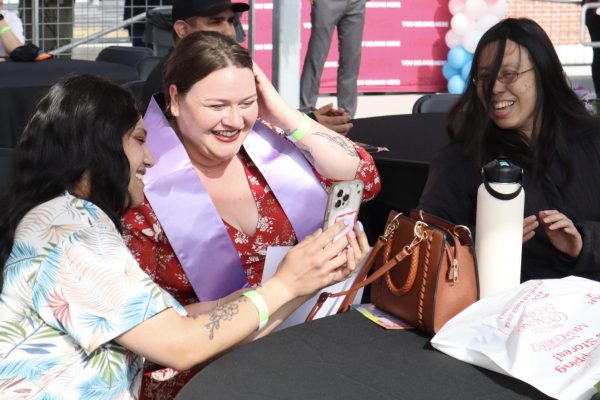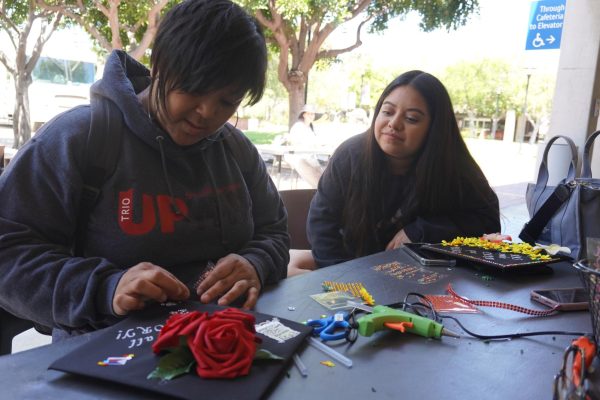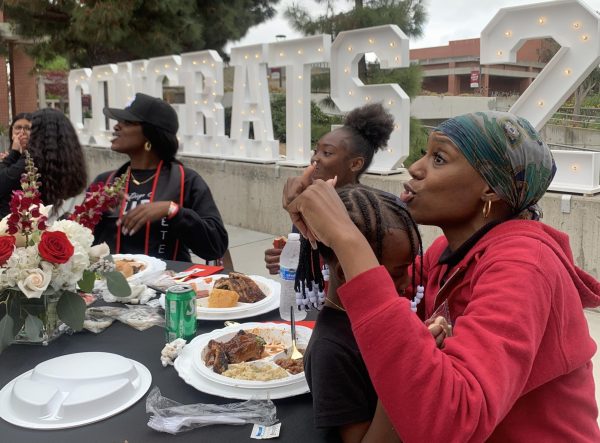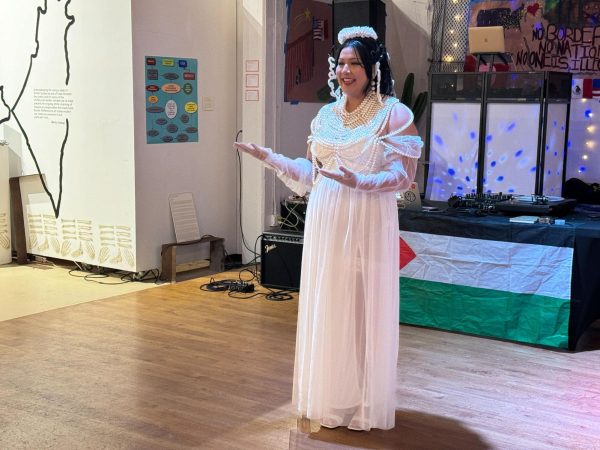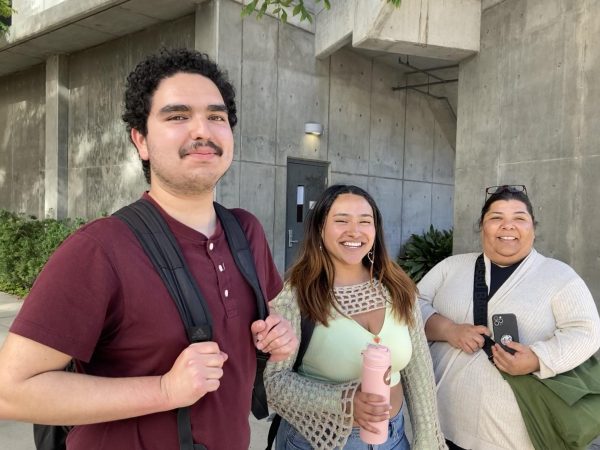UPDATE: City College professors share the challenges of remote learning
Online classes have perks and disadvantages, but the quick transition to remote learning has been a struggle for some faculty
Professor Caitlin Fares was teaching online-only classes when the pandemic struck, although she didn’t need to modify her classes, some of her assigments needed to change to make sure students can perform them from home. Photo provided by Caitlin Fares
May 27, 2020
June 17 at 12 p.m.: City College does not traditionally offer honors classes or contracts for online courses. However, due to the pandemic, the Honors Program is making an exception for both the spring 2020 and fall 2020 terms. Honors courses are listed on the fall 2020 schedule online, which went live on June 8. An update was made to the story to reflect this exception.
When San Diego City College English professor Kelly Mayhew found out all classes would transition online due to concerns related to COVID-19, she felt fear and trepidation since she has never taught online before.
“My biggest concern was being able to figure out a way to translate what I do in class into a remote environment,” Mayhew said.
She refers to the word “remote” because she does not consider herself an online teacher.
“I never had been,” she said. “This is all new for me.”
The San Diego Community College District closed its campuses on March 16 and provided a week of training to professors to prepare for remote learning, which officially began on March 23.
UPDATE: The SDCCD will continue online instruction through the remainder of spring and summer. https://t.co/ZDv2pLlQSC pic.twitter.com/6BpcDPXYW8
— SD Community College District (@SDCCD) March 26, 2020
Students and faculty, including those who had already been teaching online, had to adapt to the quick transition.
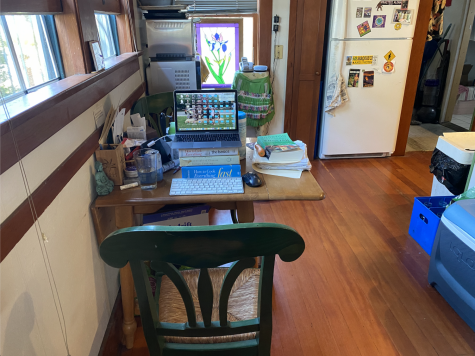
Photography professor Caitlin Fares was teaching fully online pre-pandemic. When campus closed, she offered to help those who had never taught online and was grateful she did not have to transition her classes.
Fares explains that developing a class online is a “huge amount of work.”
“Every week I was pre-recording lectures and captioning and developing the lectures and writing them all up in PowerPoint, I was creating discussions, creating quizzes,” Fares said.
She later added that she wanted to make sure the content was accessible and relevant to all students, which can be challenging when communicating via email.
Although professor Fares did have to modify some assignments to make sure students could work on them from home, she said she felt “lucky” she didn’t have to redesign her classes.
Even though remote learning can be time-consuming for the faculty, it can have some advantages for students.
Online classes mean that students don’t have to drive or commute and can work on their own time. Mothers, caregivers and full-time workers can find it easier to accommodate their classes around their schedules.
Some professors noted that the quality of the students’ assignments and performance has been about the same compared to before remote learning. Fares said that she noticed an improvement in performance for some of her students since they now have more time to work on projects.
Despite having these certain advantages, there are still challenges.
“Some students are really thriving and some students are not thriving at all,” Fares said.
She has seen a higher amount of students dropping classes amid the pandemic as opposed to any of her previous semesters, despite the fact that she has been more flexible.
7 tips for online class success – If you have any more tips leave us a comment or a DM. https://t.co/GhGbii1hmw
— San Diego City Times (@SDCityTimes) April 8, 2020
Mayhew has not had a big difference in students dropping when comparing it to other semesters.
“Colleagues of mine both in our district and also in the Grossmont-Cuyamaca Community College District have lost 25-40% of their students in going remote,” she said.
The professors noted that other students are still struggling and faculty members must be available and flexible. Mayhew noticed that her students are feeling “loneliness and depression,” which encourages her to reach out to them.
A 2017 study found moderate and severe depression was associated with a higher time of computer use and TV watching in adults over the age of 20.
On top of transitioning classwork online, students also have to juggle dealing with layoffs and uncertainty.
Check out our journal entries, City Journals, highlighting the impact of the COVID-19 pandemic on members of SD City College.https://t.co/O8YOB6ZoFM
— San Diego City Times (@SDCityTimes) May 20, 2020
History professor Susan Hasegawa teaches both online and in-person and she has also been reaching out to her students.
“I’ve been trying to send surveys, resources and scholarships … trying to push out as many resources I know about,” she said.
Hasegawa shares that two of her students were sick but were not able to get tested. She also had another student who had to drop her class because of an increase in hours in the grocery store where the student works.
All three professors agreed that the biggest struggle of going online was the technological inequity that is present at City College, where many students do not have computers or reliable Wi-Fi.
Usually, students who did not have technology at home could just use the computer lab to complete assignments, but that is no longer an option.
“It is not always simple for some students so I really have to be flexible,” Hasegawa said.
Due to this concern, City College has provided a Wi-Fi lot and raised money to give students laptops.
Attention City College students: We have a WiFi Lot.
Parking Lot #5 | M-Th: 8:00am–8:00pm, F: 8:00am–3:00pm
For more information please visit https://t.co/q8gd8BOtjQ#sharecity pic.twitter.com/JXr5cO0003— SanDiegoCityCollege (@sdcitycollege) May 12, 2020
Even with the technology, some classes are more challenging to transfer to a remote setting.
“In our honors program we don’t offer online courses at all (in past semesters) because some schools don’t accept them and the kind of experience that we want our honors scholars to get is not always available in an online environment,” said Mayhew, who is also an Honors Program Coordinator.
Although Fares does not teach lab courses this semester, she mentioned how this can be challenging and that students who are currently taking labs have to work with what they have at home or rely on services outside of campus.
Like students, professors have to work with the struggles of the stay-at-home order.
“I miss being in a room with humans, I miss my students, I miss seeing them, I miss talking to them. … I missed the rabbit holes,” Mayhew said.
Her classes are always promoting discussions and interaction.
“I do miss seeing students … miss going to City,” Hasegawa said.
SDCCD announced on May 5 that remote learning will continue through fall, with the exception of certain classes such as labs.
“This has been a big test for me,” Mayhew said. “I don’t want to let anybody down.”
As the semester draws to a close, how has the transition been for you? Comment below or share on social media with @sdcitytimes.


